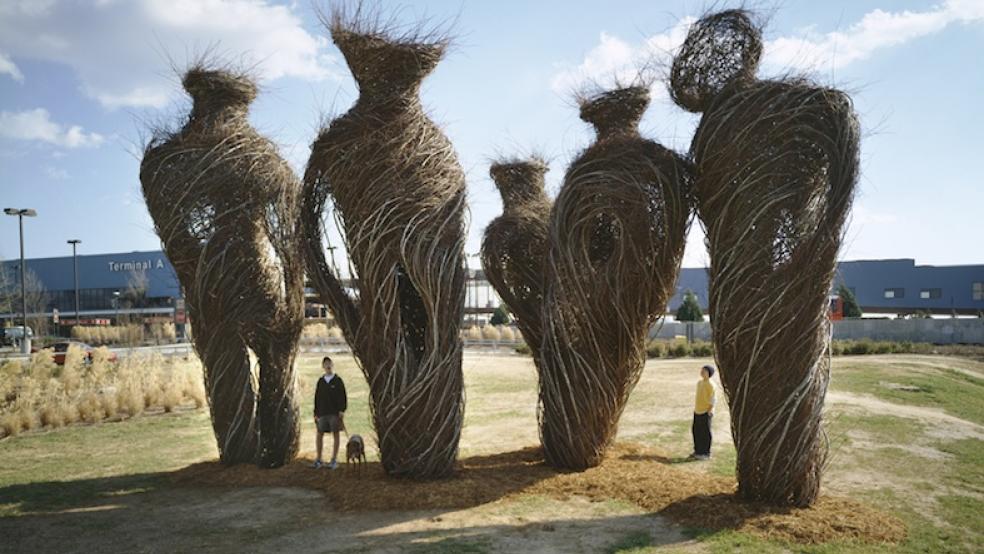Patrick Dougherty, an internationally acclaimed artist, makes elaborate sculptures out of wood. But he doesn’t carve them – he weaves them – and makes a nice living from his stick structures.
Trained in art history and sculpture as well as in carpentry, Dougherty averages 10 stick sculptures a year, takes three weeks to build each one, and charges $25,000 to $35,000 plus expenses for each creation.
SLIDESHOW: 15 Stunning Works of Stick Art
It’s an art form plenty of organizations are willing to pay for, as the massive and unusual works by the award-winning Dougherty, who grew up in North Carolina, draw enthusiastic audiences. “I’m a full-time working artist and have worked steadily since the mid-1980s,” said Dougherty in an interview.
Since his first work in 1982, his twig-fed and sapling-strewn installations have graced gardens, museums, parks, private residences and universities all over the world, including the University of Virginia in Charlottesville; Villes de Nantes, France; the U.S. Embassy in Belgrade, Serbia; and the Palo Alto Art Center in California, to name but a few.
In 30-plus years he’s built over 250 natural sculptures, which he usually lets recede back into the landscape after the gig is over.
“I enjoy identifying a provocative site for building a sculpture – then constructing an artwork that excites the imagination of those who pass by,” says Dougherty. “I tend to chat and engage the viewers during my stay, hoping to tap the goodwill of that place and weave those energies into the fabric of the sculpture. Ultimately, I love the nomadic life and the chance to travel and fully engage with the world.”
Related: Odd Job of the Day – She Packs Up Kids’ Camp Trunks
If the whole endeavor seems too fanciful to be true, consider that Dougherty is booked several years in advance. In the spring of 2016, for example, he’ll be working in Sweden at the childhood home of Astrid Lindgren, best known as the creator of Pippi Longstocking.
Dougherty, 68, says he’s “still in my productive years.” He plans on being an “elder statesman for the arts and perhaps the environment” as well, he says.
“I enjoy my work immensely. I watch with interest the life cycle of my sculptures. In the beginning, they have the vigor of their teenage years. Then they mature into their sites and become companions for the inquisitive.” Finally, after about two years out, his works take their part in the cycle of nature again: “The sculpture sags and contributes as fertile ground for the next generation of trees.”
Top Reads from The Fiscal Times:





